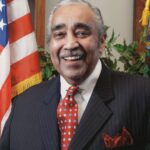Scientists working to help astronauts regain balance after extended flights in zero gravity say they’ve found a way to use the research to help elderly people avoid catastrophic falls.
An “iShoe” insole contains sensors that read how well a person is balancing. The point is to gather information for doctors and to get people to a specialist — before they fall.
Erez Lieberman, a graduate student who developed the technology while working as an intern at NASA, says a damaging fall is preceded by numerous warnings, similar to how high cholesterol and elevated blood pressure point to a coming heart attack.
“You gradually get worse and worse at balancing,” said Lieberman, who studies in a joint Harvard-Massachusetts Institute of Technology health science and technology program. “If you know the problem is there, you can start addressing the problem.”
The National Osteoporosis Foundation estimates 300,000 people annually suffer hip fractures, which are often caused by falls. An average of 24 percent of hip fracture patients age 50 and over die within a year of the fracture.
Many fall victims who don’t die within a year wind up being disabled the rest of their lives.
“It’s a huge issue,” said Elinor Ginzler of the AARP. “It significantly impairs your ability to stay independent, which is what people want.”
The idea for the iShoe came to Lieberman while he was working at NASA last summer on a project to help astronauts, who train at Johnson Space Center in Houston, regain balance after months in zero gravity.
The work is part of preparations for long space missions, such as trips to Mars, that require astronauts to perform complicated tasks on the terrain soon after landing.
The balance research seemed to Lieberman to have obvious earthly applications for the elderly.
He and Katharine Forth, a visiting scientist at NASA who also works on the iShoe, had been touched personally by the issue of elderly falls, with each seeing a grandmother’s health rapidly deteriorate after such an accident.
“It was something that has kind of been on my mind in general, and once I started looking at balance it became very clear it would have applications in that direction,” Lieberman said.
NASA tests balance with an expensive device about the size of a phone booth. Lieberman and Forth say the iShoe insole, slipped inside any shoe, solves the problem of portability and affordability, since the device would cost about $100.
The iShoe researchers used some of their own work and previous NASA data to determine how pressure is distributed on the foot by people with balance problems, compared to those with good balance.
They then were able to determine certain pressure patterns that show up when people are struggling with balance.
The iShoe, with a half-dozen sensors, is not an instant alarm, though it will send out a signal if the wearer actually falls. It’s more like a data recorder that the user can bring to a doctor or balance specialist for help if the dangerous pressure patterns are seen.
Balance problems are caused by many factors, including deteriorating muscle tone, bad vision and inner ear problems, and the possible solutions can be as simple as a tai chi exercise to build strength.
“Poor balance isn’t something you have to accept,” Forth said. “You can help yourself, you can improve balance.”
The iShoe has a way to go to reach the market. It’s still being tested to ensure it can hold up under constant foot pounding, and Lieberman and Forth are still perfecting the software that identifies the faulty pressure patterns. Research involving elderly people is just getting under way.
Lieberman estimates $1 million is needed for a broad clinical trial, and $3 million to $4 million to bring the insole to market.
The company has applied for a patent as well as federal funding. Once funding is obtained, the iShoe could be for sale in 18 months, Lieberman said.
Dr. Robert Lindsay, a professor of medicine at Columbia University and a trustee at the osteoporosis foundation, said that to be of any use, the iShoe would have to be affordable, durable and collect data that’s easy for physicians to read.
But he said he’s not aware of other technology that can do what the iShoe aims to — provide objective data in an area of medicine where doctors are now forced to depend on subjective data, such as self-reporting by patients and their own visual analysis.
“If they have a sensor that can detect differences in balance, it is fairly easy to train the elderly, using physical therapy, to improve their balance,” Lindsay said. “It would be a good tool.”
(Associated Press)






